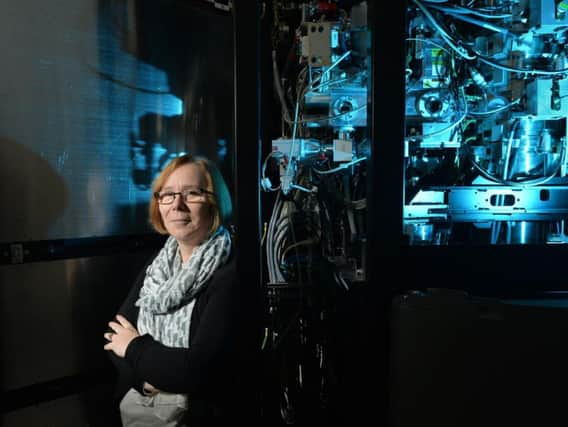Protein breakthrough by Leeds University scientists could help tackle Alzheimer's


University of Leeds scientists were part of an international team which studied the effect of a protein complex on the development of illnesses like Alzheimer’s and Huntington’s disease.
They discovered that the nascent polypeptide-associated complex (NAC), which has been largely unstudied, can prevent the accumulation of toxic “plaques” linked to cell degeneration.
Advertisement
Hide AdAdvertisement
Hide AdThe team, which included staff at the University of Konstanz, Germany, and Stanford University in America, are planning further work to find out if it can be used in treatments to slow the onset of progressive illnesses.
The researchers said Huntington’s and Alzheimer’s disease are linked to specific proteins which clump together over time, causing the death and deterioration of brain cells.
Professor Sheena Radford, of Leeds University’s Astbury Centre for Structural Molecular Biology, said: “We were very surprised by these findings. The results were totally unexpected.
“By understanding the mechanism of how NAC works, we are a step closer to developing a molecule that could slow or even prevent degenerative diseases.”
Advertisement
Hide AdAdvertisement
Hide AdThe research, published in the journal Molecular Cell, looked into how NAC acts as a “chaperone” by spotting the proteins responsible for toxic build-ups.
Elke Deuerling, Professor for Molecular Microbiology at the University of Konstanz, said: “What is so fascinating about this is that NAC can recognise different types of aggregation-prone proteins and prevent them from aggregating. NAC is a very abundant cellular protein and seems to be involved in many processes that maintain cell fitness, health and functionality.
“We believe it to be one of the most important chaperones in the cell.”
The research was funded by the Human Frontier in Science Program, the Wellcome Trust, the European Research Council and the German Science Foundation.